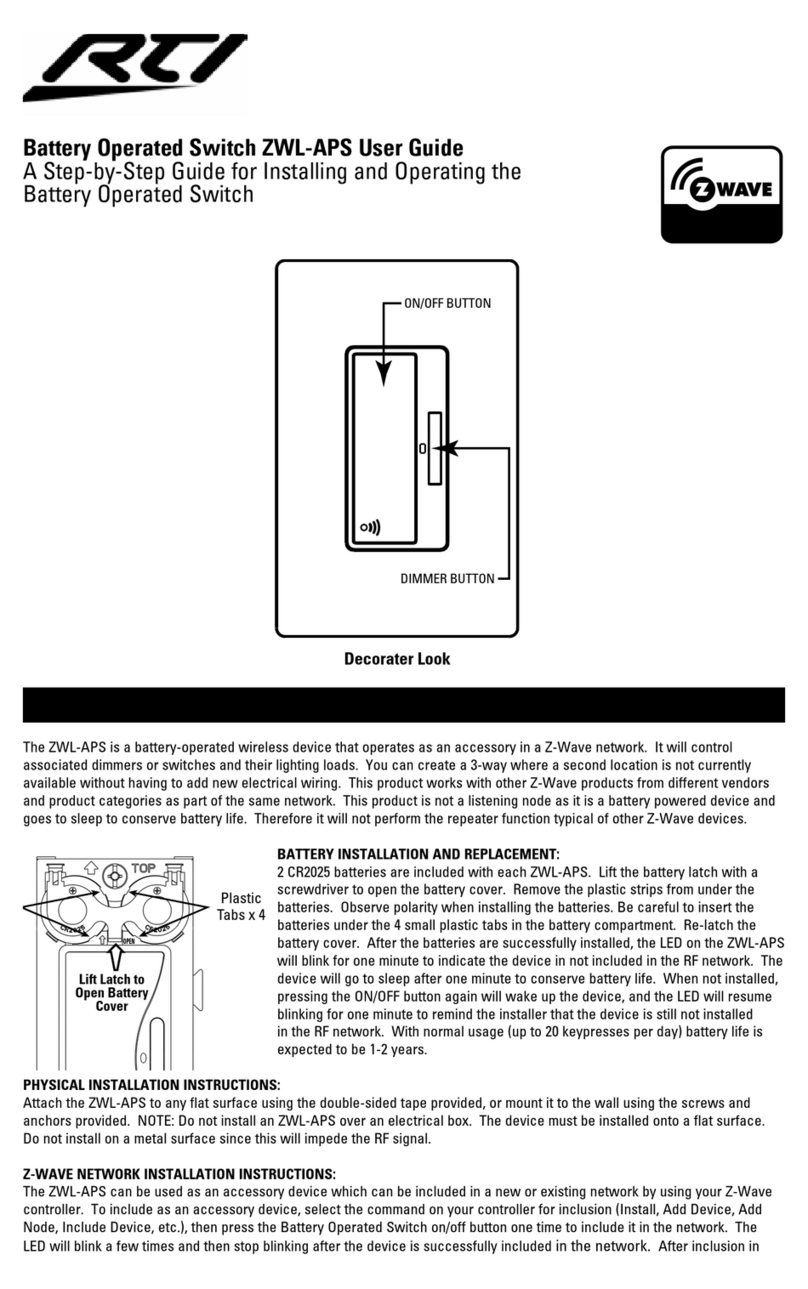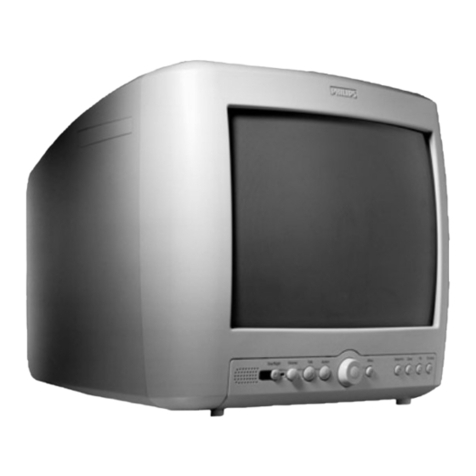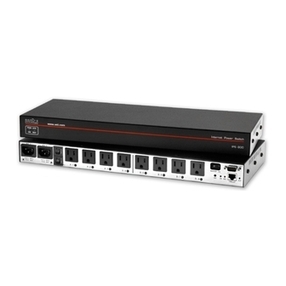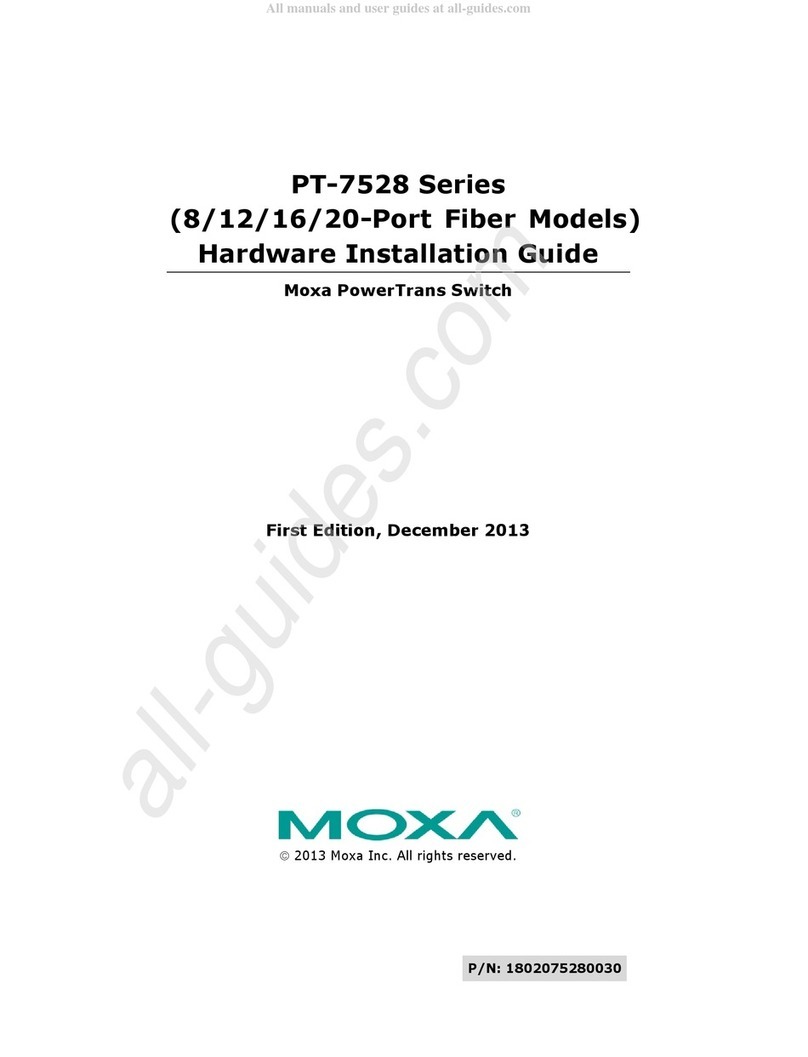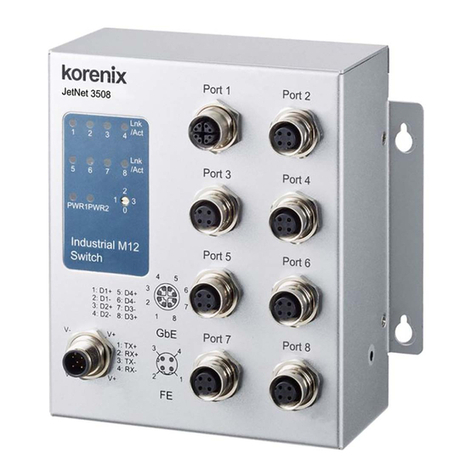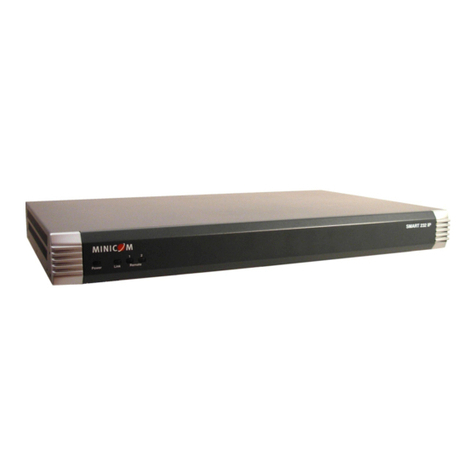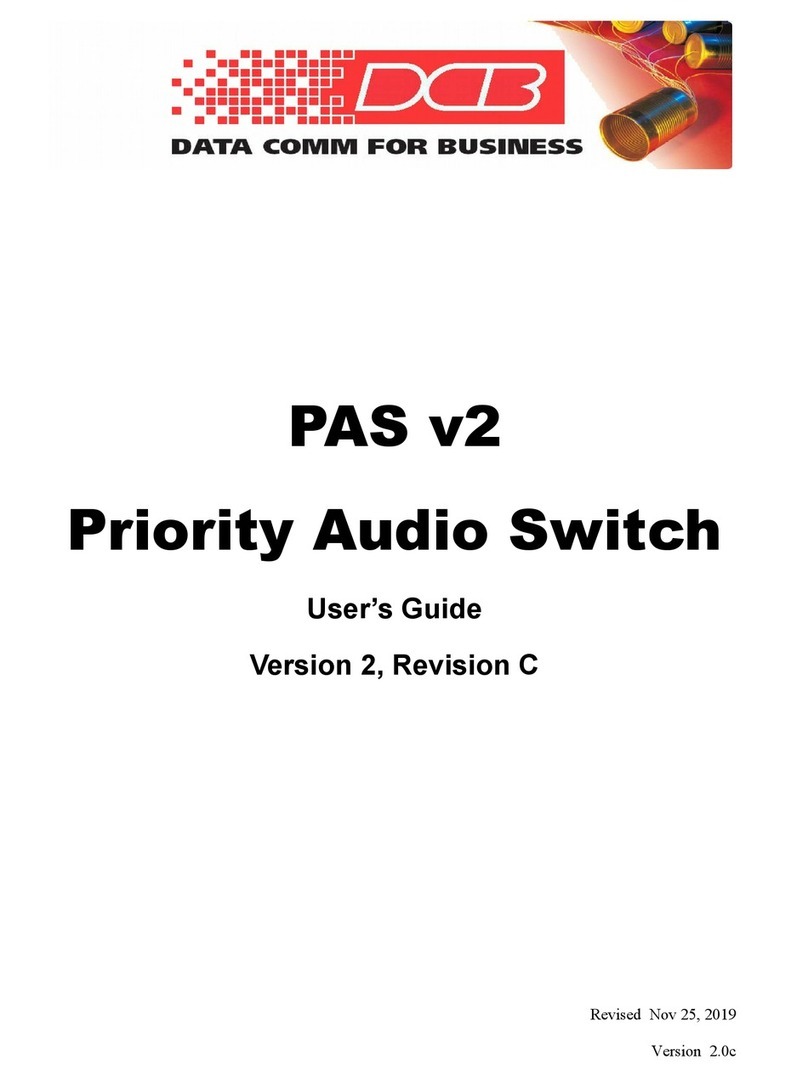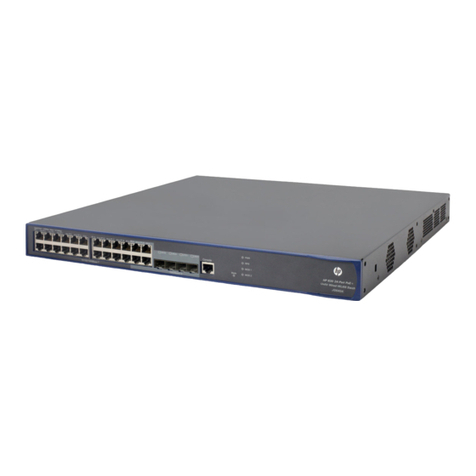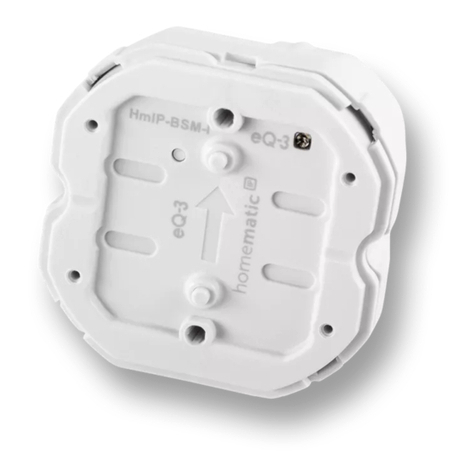SEM PHTS108 User manual

A2538-003/01 March 2020
PHTS108 PORTABLE HANDHELD TELEMETRY SIMULATOR
USER’S GUIDE
Systems Engineering & Management Company
1430 Vantage Court
Vista, California 92081
PROPRIETARY INFORMATION
THE INFORMATION CONTAINED IN THIS DOCUMENT CONSTITUTES PROPRIETARY INFORMATION AND INTELLECTUAL PROPERTY
OF SYSTEMS ENGINEERING & MANAGEMENT COMPANY (SEMCO). ACCORDINGLY, THE USER(S) OF THIS INFORMATION
AGREE(S) TO PROTECT THIS INFORMATION TO THE EXTENT THAT THEY WILL PREVENT OTHERS FROM COPYING AND/OR
REPRODUCING THIS INFORMATION, EITHER IN WHOLE OR IN PART, OR MANUFACTURE, PRODUCE, SELL OR LEASE ANY
PRODUCT COPIED FROM OR ESSENTIALLY REPRODUCED FROM THE INFORMATION CONTAINED IN THIS DOCUMENT WITHOUT
THE EXPRESSED WRITTEN APPROVAL OF SYSTEMS ENGINEERING & MANAGEMENT COMPANY (SEMCO).
DISTRIBUTION STATEMENT
DISTRIBUTION OF THIS DOCUMENT IS AUTHORIZED TO U.S. GOVERNMENT AGENCIES, THEIR CONTRACTORS, AND
INTERNATIONAL USERS WHO HAVE PURCHASED SEMCO’S PHTS HANDHELD TELEMETRY SIMULATOR UNDER U.S. EXPORT
RULES AND REGULATIONS. THIS PUBLICATION IS PROVIDED AND REQUIRED SOLELY FOR THE USE AND OPERATION OF THE
TELEMETRY SIGNAL SIMULATOR. OTHER REQUESTS FOR THIS DOCUMENT SHALL BE REFERRED DIRECTLY TO
SYSTEMS
ENGINEERING AND MANAGEMENT COMPANY (SEMCO)

A2538-003/01 March 2020
SEMCO Proprietary Information
SAFETY SUMMARY
System Weight and Handling Restrictions - Depending upon the specific system and configuration,
each PHTS108 chassis weighs approximately 10 pounds without battery and <15 lbs with battery
installed. The PHTS108 is housed in a ruggedized enclosure designed for handling and operation by
one person. A ruggedized carrying case for transporting and storage is provided for the PHTS108 and all
accessories.
Electrical – The PHTS108 is designed to operate on 12 VDC battery power as well as 115/230
VAC 50/60 Hz, and complies with all U.S. and International safety codes and regulations required
for safe operation and use of commercial equipment. Use standard and accepted safety practices with
respect to operating commercial electrical equipment at all times to avoid the risk of personal injury or
death.
EMI/EMC – The PHTS108 complies with all FCC and CE regulations regarding electromagnetic
interference and compatibility. There are no personnel hazards or safety issues with respect to EMI/EMC
when operating the system.
Exposure to Radio Frequency (RF) Signals – The PHTS108 is designed to transmit RF signals
from 1435.5 MHz to 5250 MHz at levels of +5 dBm to -100 dBm. These signal levels are well below
the minimum safe exposure levels prescribed by both U.S. and International standards.
There are high power (+20 dBm, +30 dBm and +37 dBm) output options available. When a high power
option is installed, all safety practices and procedures in place at the user location applicable to
protection from RF signal exposure at these levels must be followed.

A2538-003/01 March 2020
SEMCO Proprietary Information
LIST OF EFFECTIVE
PAGES
Page
Change
Date
Page
Change
Date
Initial Release
A2538-001
05/01/2018
All
AllAll
A2538-002
04/01/2019
All
A2538-003
03/01/2020

A2538-003/01 March 2020
SEMCO Proprietary Information
i
SECTION
TABLE OF CONTENTS
TITLE
PAGE
1
INTRODUCTION
1
1.1
Scope
1
1.2
Purpose and Description
1
2
GETTING STARTED
2
2.1
Description
2
2.2
Initial Hardware Set-up and Operation
4
2.2.1
Optional Dual RF Output and Dynamic Combiner Test
Feature
Option
7
2.2.2
High Power Options
8
3
TELEMETRY SIGNAL SIMULATOR OPERATION
10
3.1
Overview
10
3.2
Touch Screen Controls
10
3.2.1
RF Control
11
3.2.2
Modulation Control Panel
13
3.2.3
File Playback as a Data Source
16
3.2.3.1
Chapter 10 File Playback
17
3.2.4
File Playback Control Panel
22
3.2.4.1
Using a Flat Binary File Directly from USB Media Source
22
3.2.4.2
Loading and Saving a Flat Binary File to the PHTS108
Hard Drive
26
3.2.5
Using an External Data Source
28
3.2.6
Bit Synchronizer Control Panel
28
3.2.6.1
Decoder and Encoder Code Selection
29
3.2.6.2
PN Pattern Generation
30
3.2.6.3
Derandomizer
30
3.2.6.4
Loop Bandwidth
31
3.2.6.5
Input Impedance
32
3.2.7
BERT Control Panel
32
3.2.8
Bit Sync, Frame Sync and BERT Control Panel
34
3.2.9
Frame Sync Control Panel
34
3.2.10
Additional Supporting Functions
31
3.2.10.1
About
39
3.2.10.2
Network
40
3.2.10.3
Presets
41
20External
Modulation TTL
Signal Level
and Impedance
TABLES
TABLES
TABLE
TITLE
PAGE
2-1
PHTS108 and Accessories
3
2-2
PHTS108 Simulator I/O
4
3-1
External Modulation Source Requirements
28
3-2
External Modulation TTL Signal Level and Impedance
28

A2538-003/01 March 2020
SEMCO Proprietary Information
ii
ILLUSTRATIONS (continued)
FIGURE
TITLE
PAGE
2-1
PHTS108 Portable Handhold Telemetry Signal Simulator
2
2-2
PHTS108 Ruggedized Portable Carrying Case
2
2-3
PHTS108 Block Diagram
3
2-4
PHTS108 Simulator I/O and Battery Interface
5
2-5
Earlier D Connector Cable Harness Assembly
6
2-6
Current D Connector Cable Harness Assembly
6
2-7
Dual RF Output and Dynamic Combiner Test Option
7
2-8
+20 dBm High Power Option
8
2-9
+30 dBm and +37 dBm High Power Options
9
3-1
Simulator Touch Screen Display
10
3-2
RF Control Panel
11
3-3
Frequency Keyboard Window
11
3-4
Entering an Invalid Frequency
12
3-5
RF Level Keyboard Window
12
3-6
Entering an Invalid RF Output Level
13
3-7
Modulation Control Panel
13
3-8
Modulation Mode Selection
14
3-9
Modulation Data Rate Selection
14
3-10
Entering an Invalid Modulation Data Rate
15
3-11
Modulation Data Source Selection
15
3-12
Randomizer ON/OFF Selection
16
3-13
A Flat Binary File
16
3-14
WSI Chapter 10 File Utilities GUI
18
3-15
Opening the WSI Chapter 10 File Utility
18
3-16
Selecting the Chapter 10 File
19
3-17
Viewing the Chapter 10 File Summary Information
19
3-18
TMATS Data Stream Information
20
3-19
DUMP Screen
20
3-20
Creating the Flat Binary File
21
3-21
Created File Shown in File Explorer
21
3-22
File Playback Control Panel
22
3-23
Modulation Data Source Playback Selection
22
3-24
Accessing the File Playback Directory
23
3-25
Modulation Data Source Playback Selection
23
3-26
Binary File Playback Selection
24
3-27
Loading USB Media into Playback File Directory
24
3-28
Loaded Binary File Indication
25
3-29
Starting and Stopping File Playback
25
3-30
Accessing the GUI File Manager
26
3-31
Loading a File on the USB - /media Directory
26
3-32
Copying a File to the Local - /PTR108 Directory
27
3-33
Verifying File in the Local - /PTR108 Directory
27
3-34
External Modulation Data Source Selection
28
3-35
Bit Synchronizer Control Panel
29
3-36
Bit Synchronizer Decoder and Encoder Code Selection
29
3-37
Bit Synchronizer Encoder Data Polarity Selection
30
3-38
Bit Synchronizer Encoder/Decoder PN Pattern Selection
30

A2538-003/01 March 2020
SEMCO Proprietary Information
iii
FIGURE
ILLUSTRATIONS (continued)
TITLE
PAGE
3-39
Bit Synchronizer Derandomizer Selection
31
3-40
Bit Synchronizer Loop Bandwidth Selection
31
3-41
Invalid Loop Bandwidth Selection
32
3-42
Bit Synchronizer Input Impedance Selection
32
3-43
BERT Control Panel
33
3-44
Test Period Selection
33
3-45
External Data Input and Bit Error Insertion
34
3-46
Frame Sync Control Panel
34
3-47
Frame Sync Word Selection
35
3-48
Frame Sync Word Length Entry
35
3-49
Invalid Frame Sync Word Length Entry
36
3-50
Frame Sync Bits per Word Entry
36
3-51
Invalid Bits per Word Entry
37
3-52
Frame Sync Words per Frame Entry
37
3-53
Invalid Words per Frame Entry
38
3-54
Frame Sync Threshold Entry
38
3-55
Invalid Frame Sync Threshold Entry
39
3-56
Additional Supporting Functions
39
3-57
About Feature
40
3-58
Network Feature
40
3-59
Entering Network Client Information
41
3-60
Save and Load Presets Feature
41

A2538-003/01 March 2020
SEMCO Proprietary Information
1
1 - INTRODUCTION
1.1 Scope
This User’s Guide provides the necessary information for the operation of SEMCO’s PHTS108 Portable
Handheld Telemetry Simulator, which is used to test telemetry receivers and telemetry ground stations
by dynamically simulating telemetry signals normally emanating from aircraft, missiles and weapon
systems during flight test operations.
1.2 Purpose and Description
This User’s Guide contains detailed information for PHTS108 Portable Handheld Telemetry Simulator
operation.
Section 2 Getting Started briefly describes and lists the PHTS108 standard and optional hardware and
software features and then describes how to install and apply power to the PHTS108 hardware.
Section 2 also describes system hardware I/O interface and provides instructions for setting up system
operation and control. The standardized hardware I/O description facilitates PHTS108 operation in a
typical Telemetry Ground Station environment.
Section 3 Telemetry Signal Simulator Operation provides instructions for PHTS108 operations,
including set-up and status monitoring of all simulator operating features and parameters.

A2538-003/01 March 2020
SEMCO Proprietary Information
2
2 – GETTING STARTED
2.1 Description
The PHTS108 Telemetry Simulator (Figure 2-1) is a portable ruggedized handheld device designed for
pre-mission checkout of a telemetry ground station, as well as basic telemetry receiver functional testing.
The simulator provides a user-selectable internal multi-mode modulator, calibrated single level-
controlled RF output, and an embedded Bit Synchronizer, Frame Synchronizer and Bit Error Rate Tester
(BERT) with pseudo-random PCM code generator.
Figure 2-2 shows the ruggedized portable carrying case used for transporting and storing the PHTS108
and all accessories.
Figure 2-1
PHTS108 Portable Handheld Telemetry Simulator
Figure 2-2
PHTS108 Ruggedized Portable Carrying Case
Ruggedized Carrying Case
(top level showing accessories)
Ruggedized Carrying Case Interior
(PHTS108, Battery, Battery Charger,
Antenna, Optional in-line RF Amplifier, DB
Connector Wire Harness and removable
side handles)

A2538-003/01 March 2020
SEMCO Proprietary Information
3
Table 2-1 lists all equipment and accessories that comprise a PHTS108 Portable Hand-held Telemetry
Simulator.
Table 2-1
PHTS108 and Accessories
Item
PHTS108 Portable Hand-held Telemetry Simulator
Snap-on Battery
Battery Charger and Power Cable
115/230 VAC Power Cable
D-Connector-to-BNC Cable Harness
L/S/C Omni Antenna
Side Handles and Mounting Hardware
Optional +20 dBm L/S/C Power Amplifier (in-line ‘N’ Connector I/O)
Optional +30 dBm L,S/C Power Amplifier (in-line ‘N’ Connector I/O
Optional +37 dBm L/S/C Power Amplifier (in-line ‘N’ Connector I/O)
Optional Dual RF Outputs & Combiner Fade/Phase Feature (Bolt-on Module)
Overall PHTS108 design addresses a single channel RF Telemetry Test Signal, FPGA-based I/Q
modulator, an internal 10 MHz reference, and an embedded Bit Synchronizer, Frame Synchronizer and
BERT that includes a Pseudo-Random Code Generator. These components are all housed in a small
ruggedized, hand-carried battery-operated enclosure with a 12” Touch Screen, and designed for
operation in support of TM ground stations.
Figure 2-3 provides a simplified block diagram of the PHTS108 design architecture.
Figure 2-3
PHTS108 Block Diagram

A2538-003/01 March 2020
SEMCO Proprietary Information
4
The PHTS108 standard RF output frequency range covers L and S-Bands (1435.5-2394.5 MHz).
Modulation formats include PCM/FM, PM, BPSK, QPSK, IRIG 106-17 Tier I SOQPSK-TG and Tier II
Multi-h CPM. An embedded Bit Synchronizer, Frame Synchronizer and BERT that includes a Pseudo-
Random Code Generator is also provided.
The PHTS108 provides a phase-locked RF source and modulator with user-selectable, calibrated RF
signal outputs from 0 dBm to -100 dBm in 0.1 dB increments.
The PHTS108 can also be externally modulated with either a user-provided signal and test pattern,
or pre-recorded mission data using the simulator’s binary file playback feature.
Options include: C-Band RF Tuning (4400 to 5250 MHz); Dual RF Output and Fade/Phase feature for
dynamic diversity combiner testing; FM/FM Sub-Carrier and NTSC Video; and High power options
extending the PHTS108 output levels to +20 dBm, +30 dBm or +37 dBm.
PHTS108 system set-up, control and status monitoring is provided by a 12” front panel Touch Screen
and remote (network) software via Ethernet.
2.2 Initial Hardware Set-up and Operation
The user should read this User’s Guide and become familiar and comfortable with the overall features,
options and configuration of the specific PHTS108 system that will be used. Table 2-2 lists and describes
the PHTS108 I/O. Figure 2-4 illustrates the PHTS108 I/O of standard configuration with respect to AC
and DC battery power, inputs, outputs and Touch Screen controls.
Figure 2-5 is the standard “D” connector cable harness assembly originally provided with the PHTS108.
Figure 2-6 is the current standard “D” connector cable harness assembly per the date of this manual
release that also supports the Dual RF Output and Dynamic Combiner Test Option.
Table 2-2
PHTS108 Simulator I/O
Function
Description
AC/DC Switch
Line In 9-36 VDC
PHTS108 operates on 115/230 VAC, 50/60 Hz power via an adapter power cord
OFF
PHTS108 is turned OFF
Battery
PHTS108 operates on 12 VDC battery power
RF Outputs
RF Out
Modulated RF “N” connector output from 0 dBm to -100 dBm
Optional Dual RF Out
2 Modulated RF “N” connector outputs from 0 dBm to -100 dBm
Data Interface
Earlier Version External D
Connector Cable Assembly
J2 - Bit Sync Data In (BNC)
J3 - TTL Clock Out (BNC)
J4 - TTL Data Out (BNC)
J5 Pin 1 - RS422 External Modulation Data In +
J5 Pin 2 - RS422 External Modulation Clock In +
J5 Pin 5 - RS422 External Modulation Data In -
J5 Pin 6 - RS422 External Modulation Clock In -
Current Version External D
Connector Cable Assembly
Same J2, J3 and J4 BNC I/O as above
J5 Pin 1 - GND
J5 Pin 2 - Serial Data
J5 Pin 3 - Serial Latch
J5 Pin 4 - 3.3 VDC
J5 Pin 6 - GND
J5 Pin 7 - CH1 Fade
J5 Pin 8 - CH2 Fade
Bit Sync Data In
BNC Digital TTL Data Input to Bit Synchronizer
Ext Clock In (TTL)
BNC Digital TTL Clock Input to Bit Synchronizer

A2538-003/01 March 2020
SEMCO Proprietary Information
5
Table 2-2 (continued)
PHTS108 Simulator I/O
Function
Description
Data Interface
Ext Data In (TTL)
BNC Analog or TTL Data input to Bit Synchronizer
USB Port
Used to input and save a binary data file for use as a modulation source in File
Playback Mode
Data Communications
LAN
RJ45 Connection for Remote (Network) control via Ethernet
Figure 2-4
PHTS108 Simulator I/O and Battery Interface
Simulator I/O
With Slide-On Battery Installed
Without Slide-On Battery Installed
Front Panel Touch Screen

A2538-003/01 March 2020
SEMCO Proprietary Information
6
Figure 2-5
Earlier D Connector Cable Harness Assembly
Figure 2-6
Current D Connector Cable Harness Assembly

A2538-003/01 March 2020
SEMCO Proprietary Information
7
2.2.1 Optional Dual RF Output and Dynamic Combiner Test Feature
Figure 2-7 illustrates the Dual RF Output and Dynamic Combiner Test Option. This option is a module designed
to attached to the rear of the PHTS108 as shown, with module I/O provided by the “D” connector Cable Harness
Assembly. The module provides 2 modulated RF outputs and the capability to select and automatically vary
the 2 RF (CH1 and CH2) signal levels (Fade Depth), vary the rate at which these differing levels are changing
(Fade Rate) and vary the phase relationship between these 2 RF signals (Phase Shift).
Changing the Fade depth, Fade Rate and Phase between these 2 RF outputs provides the ability to dynamically
test a pre-d Diversity Combiner in a dual channel telemetry receiver and ensure proper performance using a
simulated real-world mission scenario.
Figure 2-7
Dual RF Output and Dynamic Combiner Test Option

A2538-003/01 March 2020
SEMCO Proprietary Information
8
2.2.2 High Power Options
The PHTS108 provides for +20 dBm, +30 dBm and +37 dBm high power options. These options consist of in-
line L, S and C band power amplifiers that are ideal for testing an entire telemetry ground station by providing
the ability to radiate a modulated RF signal into the antenna and vary the amplitude of this radiated RF signal
from +37, +30 or +20 dBm to -100 dBm. This simulation capability provides a means to dynamically test the
entire Telemetry Ground Station from the antenna thru the receiver and data processing subsystems.
The in-line +20 dBm RF Power Amplifier is installed and used as shown in Figure 2-8. A Lemo connector cable
provides power, sensing and control line from the PHTS housing (next to RF “N” connector). The PHTS108
“senses” when the Power amplifier is installed and automatically changes the output level readings accordingly.
Figure 2-8
+20 dBm High Power Option

A2538-003/01 March 2020
SEMCO Proprietary Information
9
The in-line +30 dBm and +37 dBm RF Power Amplifier modules are installed and used as shown in Figure 2-9.
The module attachment uses the same footprint and hole alignment as the Dual RF Output and Dynamic
Combiner Test module. The design of these 2 options precludes their simultaneous use based upon their
respective test application in a Telemetry Ground Station environment. The RF High Power feature is designed
for use at some distance outside the Telemetry Ground Station, and the Dual RF Output and Dynamic Combiner
Test feature is used umbilically inside the Telemetry Ground Station for receiver diversity combiner testing.
A Lemo connector cable provides RF Amplifier power, cooling fan power, sensing and control line from the
PHTS housing (next to RF “N” connector). The PHTS108 “senses” when the Power amplifier is installed and
automatically changes the output level readings accordingly. A short RF cable with “N” (M) connectors is used
between the PHTS RF Output and the RF Power Amplifier RF Input. The antenna is then attached to the RF
Amplifier’s RF output.
Figure 2-9
+30 dBm and +37 dBm High Power Options

A2538-003/01 March 2020
SEMCO Proprietary Information
10
3 – TELEMETRY SIGNAL SIMULATOR OPERATION
3.1 Overview
This section describes all steps and features required for PHTS108 operation. The 12” front panel
Touch Screen controls and displays described herein are applicable to all delivered PHTS108 systems.
3.2 Touch Screen Controls
Figure 3-1 depicts the front panel Touch Screen display. When the PHTS108 is turned on, the
Touch Screen will take approximately 1.5 minutes to boot up and display the required operating
controls. The PHTS108 retains the last Touch Screen set-ups when shut down.
Figure 3-1
Simulator Touch Screen Display
As shown in Figure 3-1, each PHTS108 Touch Screen control function block is identified by black
lettering on a white background and address the following functions:
A. RF Control (RF)
B. Modulation
C. File Playback
D. Bit Error Rate Tester (BERT)
E. Bit Synchronizer, Frame Synchronizer and BERT (BS/Frame Sync/BERT)
F. Frame Synchronizer (Frame Sync)
G. Bit Synchronizer (Bit Sync)
Additional supporting functions include About, Network and Presets. In addition, the Touch Screen
provides a status of the embedded transmitter module operating temperatures and a sensor turns these
modules off if the operating temperature exceeds 68o Centigrade.
Each of these functions is addressed in the following paragraphs.
Temp Sensor
Turns embedded
Transmitter modules
off at 68o C

A2538-003/01 March 2020
SEMCO Proprietary Information
11
3.2.1 RF Control
The RF Control Panel (Figure 3-2) is used to control RF Output (Outputs), select the output frequency
(Frequency) and select the desired RF output level (RF Level).
Figure 3-2
RF Control Panel
A. Outputs - Referring to Figure 3-2, touching the Outputs window toggles the yellow RF Power Output
Indicator OFF or ON. The dual RF outputs option provides the ability to select one or two RF outputs.
B. Frequency Selection - Touching the blue Frequency window enables a keyboard (Figure 3-3), and
the RF Frequency is then typed in and entered by touching the Accept button. The PHTS108 will
only accept valid frequencies of installed frequency bands and will accept a 4-digit input (e.g. 2335 for
2335.00 MHz), or inputs in 500 kHz steps (e.g. 2335.5 for 2335.50 MHz). The user touches Accept to
enter the frequency. The yellow Up/Down Arrows vary the frequency in 0.25 MHz steps.
Figure 3-3
Frequency Keyboard Window
RF Control Panel

A2538-003/01 March 2020
SEMCO Proprietary Information
12
Figure 3-4 shows the information window that appears when a frequency that is outside the range of
installed frequency bands is attempted by the user. In the Figure 3-4 example, the user is informed
that the valid frequency bands are 1435.5 to 2394.5 MHz and 4400 to 5150 MHz.
Figure 3-4
Entering an Invalid Frequency
B. RF Level – Touching the blue RF Level window produces the keyboard for RF Level entry as shown
in Figure 3-5. The desired RF Output Level is then typed in and entered by touching the Accept
button. The PHTS108 will only accept valid RF Level Outputs in 0.1 dBm increments, and the entire
RF Output Level (for example: -50.0) must be typed in.
Touching the yellow Up/Down arrows bordering the RF Level readout increases/decreases the RF
output level in 0.1 dBm steps.
Figure 3-5
RF Level Keyboard Window

A2538-003/01 March 2020
SEMCO Proprietary Information
13
Figure 3-6 shows the information window that appears when a selected RF Output Level is outside
the RF output level range. In the Figure 3-6 example, the user is informed that the valid RF output
level is between 0.0 dBm and -120.0 dBm.
Figure 3-6
Entering an Invalid RF Output Level
3.2.2 Modulation Control Panel
The Modulation Control panel (Figure 3-7) is used to select modulation Mode, modulation Data Rate,
modulation Data Source and Randomize Data.
Figure 3-7
Modulation Control Panel

A2538-003/01 March 2020
SEMCO Proprietary Information
14
A. Modulation Mode - Touching the blue modulation Mode window produces the selection menu as
shown in Figure 3-8. In addition to CW (un-modulated RF Carrier output), standard available
modulation modes include PCM/FM, Tier I SOQPSK-TG, Tier II Multi-h CPM, BPSK and QPSK.
FM/FM Sub-Carrier is offered as an additional option.
B. Modulation Data Rate - Touching the blue modulation Data Rate window produces the keyboard for
data rate entry as shown in Figure 3-9. The desired data rate is then typed in (M for Mbps and K
for kbps) and entered by touching the Accept button.
Figure 3-8
Modulation Mode Selection
Figure 3-9
Modulation Data Rate Selection
Table of contents
Popular Switch manuals by other brands
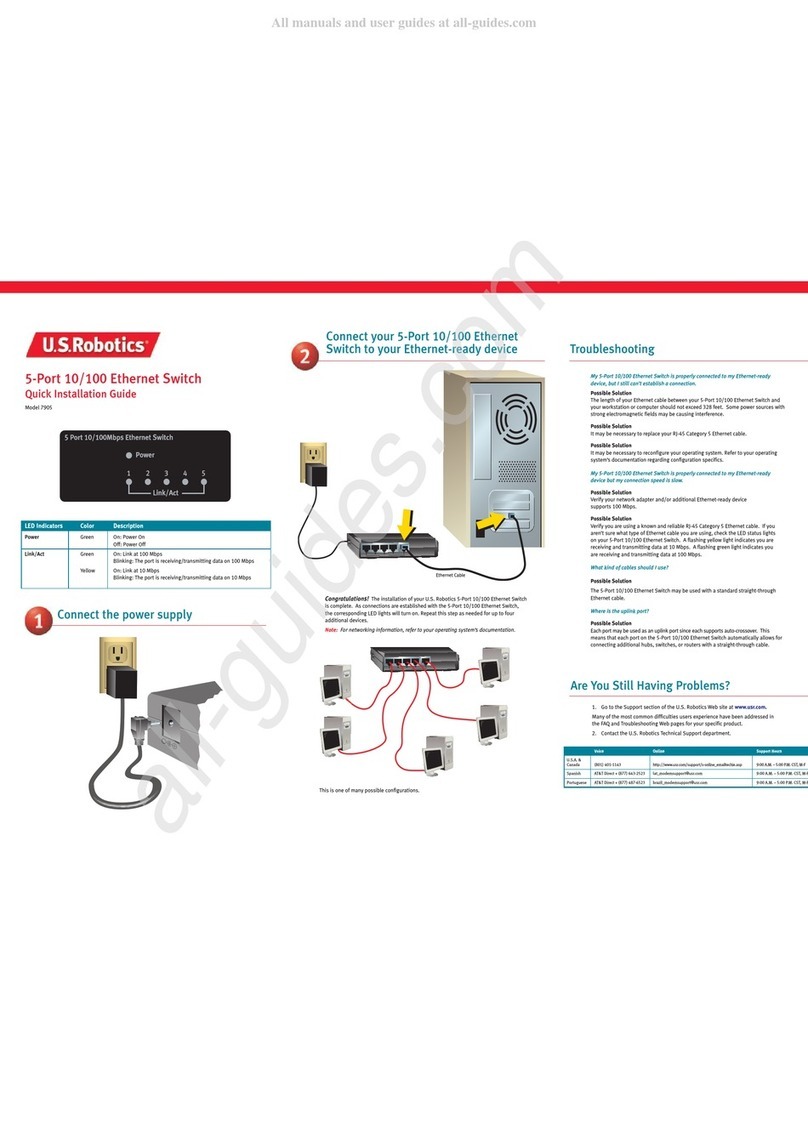
US Robotics
US Robotics 7905 Quick installation guide

Siemens
Siemens RUGGEDCOM RS8000H installation guide

Cisco
Cisco Cisco Industrial Ethernet 3000 Series Getting started guide
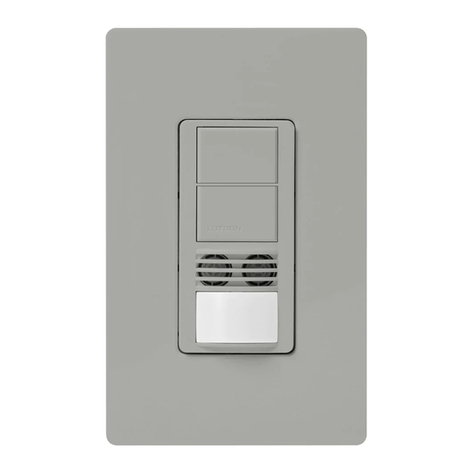
Lutron Electronics
Lutron Electronics MAESTRO MS-A202 installation guide
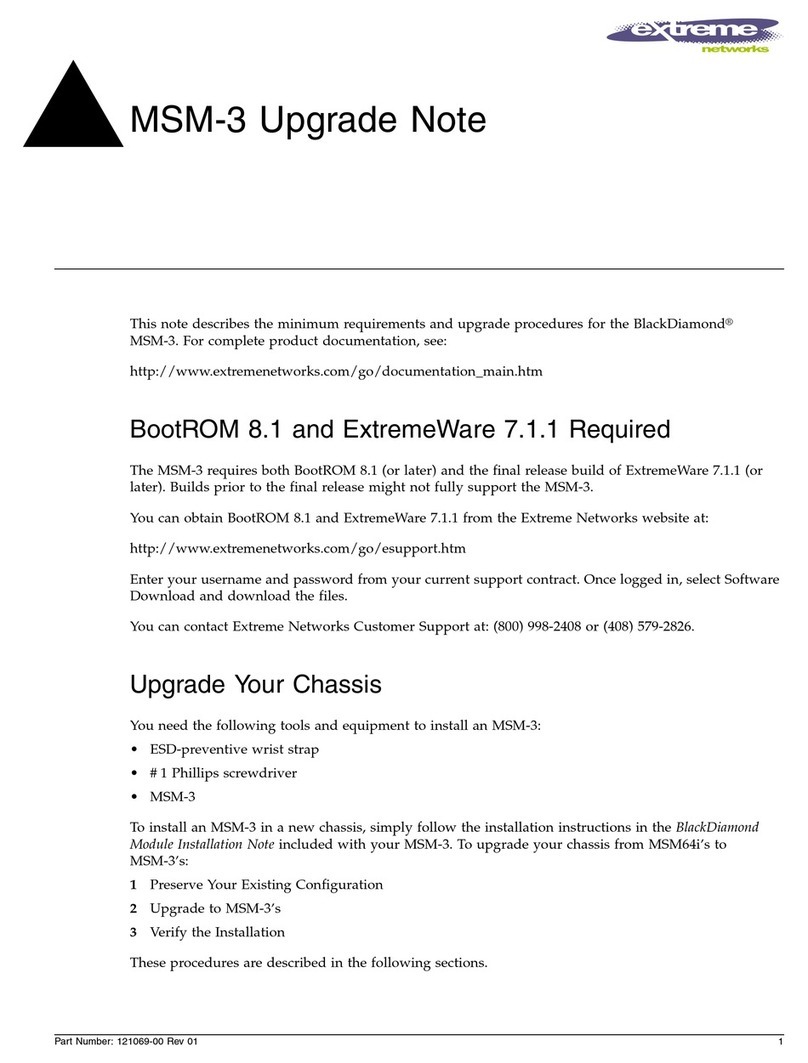
Extreme Networks
Extreme Networks BlackDiamond 6816 Upgrade guide
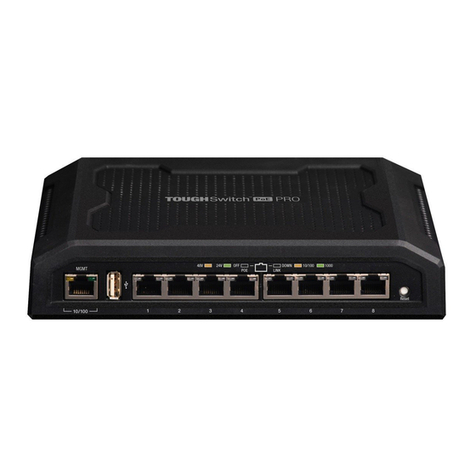
Ubiquiti
Ubiquiti TS-5-POE ToughSwitchPoE user guide
